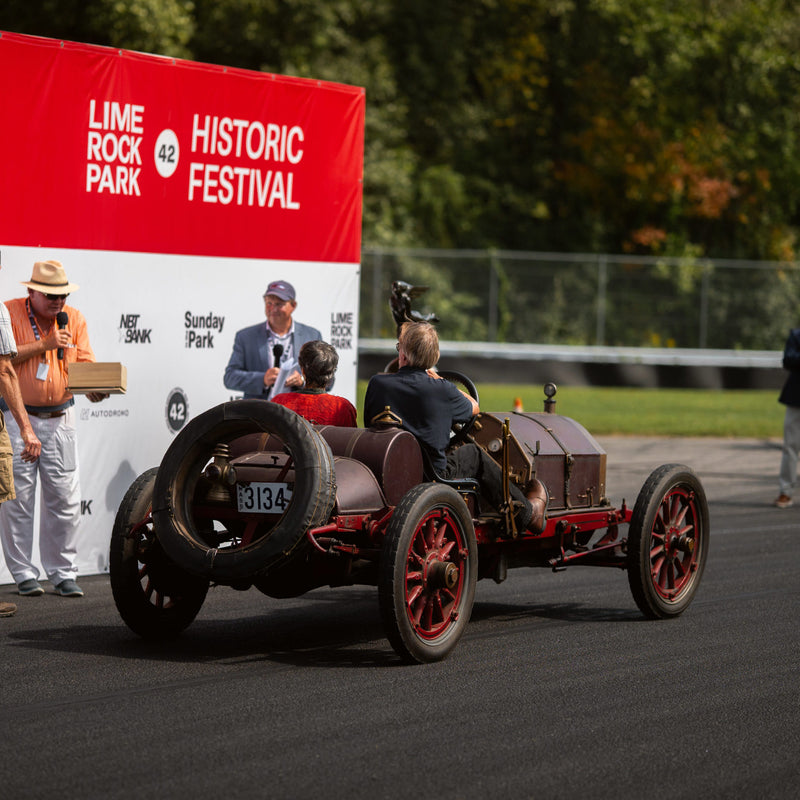In a time well before the word supercar entered our vocabulary, the fastest one in the world was built in an economically compromised Spain by a state-owned manufacturing company whose primary focus was on trucks, buses, and other industrial vehicles. In other words, the Pegaso Z-102 was born of strange circumstance, and since it was a wildly expensive endeavor for a country recovering from civil war, not many were built in period, and they remain obscure today with only a few dozen surviving from the original production run.
A dry-sump V8 with four cams powers the alloy coachwork (a number of bodies were available from Italian and Spanish coachbuilders like Touring and Serra), and though it saw no success on the racing circuit, the Z-102 was among the most advanced and high-performing GTs of its day.



Rafael Pueche’s 1955 example still sees exercise on the mountain roads outside of Madrid, and given the rarity of his car even a trip to the end of the driveway and back would constitute more use than most would dare allow.
This lucky one that still gets to spin its odometer was originally delivered to one of Pegaso’s factory racing drivers who had done a stint in a similar one at Le Mans, and following a change of ownership after he moved on, it had its roof lopped off. There’s more to the story than the surface though: for starters the driver was a one Juan Jover, and his stint at Le Mans can be summarized by the high-speed accident sustained in practice that resulted in a majorly tweaked leg for Jover and prompted the team to pull the car from the race. And this car, Jover’s street car, had its Touring berlinetta body transformed into a spider by the coachbuilders in Barcelona at Serra.





Rafael’s car has a unique history, but by their nature so does every Z-102. The story behind the Spanish sports car is an excellent example of one of life’s intersections wherein something special is born against the odds (and perhaps against the financial interests of company stakeholders).
In this case, Spain is a country emerging from a civil war in a world emerging from a world one, and she decides to spark up some industry under the oversight of the state. Things aren’t quite that simplified in real life, but generally speaking Pegaso was a state-owned brand underneath the umbrella of Enasa that was chiefly concerned with the production of vehicles meant to carry dozens of people or else many kilograms of things they needed—in other words, a two-seater sports car that cost multiples of a comparable Jag or Ferrari was not expected to be conceived here.



However, when Enasa and subsequently Pegaso were being built up from the purchased leftovers of the defunct Hispano-Suiza brand, the man chosen to lead this effort and its requisite engineering was not going to be satisfied playing around with just city buses and truck cabs to entertain himself. Not coming off of a job at Alfa Romeo as their head engineer in the Special Projects division that saw Wifredo Ricart working on grand prix cars and airplane engines anyway.



At Alfa he had proposed and abandoned several supercharger projects that were either too complex or too costly to undertake (including the Alfa Romeo Tipo 512 which was built to take on the Silver Arrows), but with Pegaso he managed to create the world’s fastest production car thanks in large part to the supercharger that could be fitted to its 3.2L V8 as an option (with supercharger, the Z-102 could reportedly hit a top speed of 151mph).
The Pegaso Z-102, like most of Ricart’s best work, was an advanced vehicle for its time not only for its powertrain’s obvious capabilities, but for its alloy body, its transaxle gearbox, its novel application of the De Dion rear suspension architecture and its fully independent system up front. Eclipsed in its era by cars like the Gullwing when it comes to widespread popularity, we think anything that was once the world’s fastest something deserves some recognition, and especially when it looks like this.
Drive Tastefully®





















































